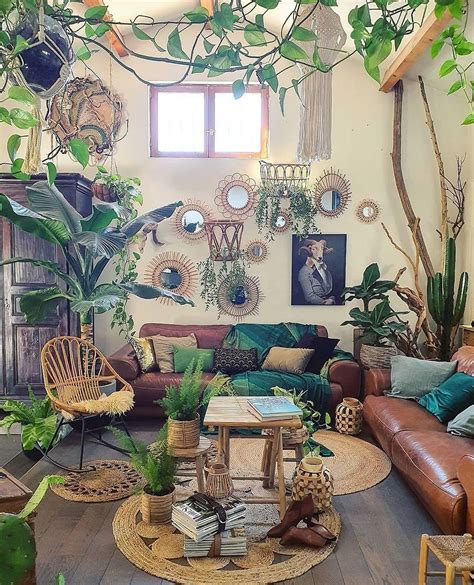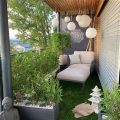Create a Lush Jungle Vibe for Your Balcony Oasis
Transforming a balcony into a jungle-inspired haven is a trend that merges urban gardening with outdoor decor, making even the most compact spaces feel like a verdant retreat. Whether you’re craving a touch of tropical plants or seeking a design that nurtures both aesthetics and sustainability, this article will guide you through the key concepts, practical advice, and challenges associated with balcony design. With creative solutions and step-by-step instructions, we’ll help you grow a space brimming with life.
Key Concepts for Creating a Jungle Vibe
- Container gardening: Using movable pots to grow plants of varying sizes, ideal for balconies with limited soil access.
- Vertical gardening: Utilizing walls, trellises, and shelves to maximize space and create lush layers.
- Greenery density: Balancing multiple plant species to achieve a full, jungle-like appearance.
- Microclimates: Understanding wind, shade, and sunlight patterns specific to your balcony to select appropriate plants.
- Balcony orientation: North, south, east, and west-facing balconies offer distinct growing conditions.
- Plant diversity: Combining tropical plants with native species to ensure both lush growth and adaptability.
Historical Context: Urban Gardens Through the Ages
Urban gardening is not a new phenomenon. From the Hanging Gardens of Babylon to ancient Roman courtyards, greenery has historically been used to beautify urban spaces. In modern times, the rise of urbanization has increased interest in container gardening as a way for city-dwellers to reconnect with nature. The concept of the ‘jungle vibe’ reflects a shift toward creating not just functional green spaces but immersive, aesthetic experiences.
Current State Analysis: Why Jungle Vibes Are Trending Now
The popularity of tropical plants and balcony transformations aligns with a desire to bring the outdoors inside. Rising urban density, environmental concerns, and lifestyle trends such as biophilic design have made green balconies a sought-after feature. Additionally, social media platforms have amplified the appeal of jungle-inspired balcony design, encouraging people to display their creativity and plant care expertise online.
Practical Applications for Your Jungle Balcony
- Use a mix of large and small tropical plants like monstera, ferns, and palms to create layered textures.
- Incorporate hanging pots for trailing plants such as pothos and ivy, enhancing vertical dimensions.
- Add weatherproof seating for a cozy outdoor escape, blending functionality with aesthetics.
- Install trellises or plant stands to grow climbers such as jasmine or bougainvillea.
- Combine edible plants like herbs or dwarf citrus with ornamentals to create a functional, visually appealing garden.
Case Studies: Successful Balcony Transformations
| Case Study | Plant Types | Creative Solutions Used | Challenges Faced |
|---|---|---|---|
| Small Balcony in New York | Monstera, Pothos, Snake Plant | Hanging pots, vertical shelves | Lack of sunlight, cold winters |
| Sunlit Balcony in Singapore | Bougainvillea, Ferns, Palms | Trellises, shade nets | Excessive heat, pest control |
| Windy Rooftop Balcony in Berlin | Lavender, Bamboo, Ornamental Grasses | Windbreaks, heavy pots for stability | Strong winds, limited drainage |
Stakeholder Analysis: Who Benefits and How
A well-designed jungle balcony offers benefits across various stakeholders:
- Homeowners: Increased property value and personal well-being.
- Neighbors: Visual appeal and potential noise reduction from plant barriers.
- Environment: Improved urban biodiversity, air purification, and reduced heat island effect.
Implementation Guidelines for Jungle-Inspired Balcony Design
- Assess your balcony’s microclimate, including sunlight and wind exposure.
- Choose low-maintenance tropical and native plants suited to your conditions.
- Start with a few easy-care plants like pothos or snake plants, gradually expanding variety.
- Use lightweight containers with good drainage to prevent overwatering.
- Incorporate automatic irrigation systems to simplify plant care.
Ethical Considerations in Urban Gardening
It’s essential to source plants responsibly and avoid species that may disrupt local ecosystems. Opt for locally grown plants and consider using recycled or sustainable materials for pots and decor. Urban gardening also raises questions about water use, which can be mitigated by installing drip irrigation systems.
Limitations and Future Research
Despite its many benefits, container gardening has limitations. Restricted space, weather constraints, and maintenance demands can challenge gardeners. Future research could focus on developing more resilient plant varieties for urban environments and exploring ways to make balcony gardening accessible to people with disabilities.
Expert Commentary on Jungle Vibes and Urban Gardening
The concept of creating jungle vibes on balconies has evolved beyond mere aesthetics to address psychological, social, and environmental needs. Experts agree that integrating nature into our living spaces promotes well-being and encourages eco-conscious behavior. However, striking a balance between lush greenery and sustainability remains crucial. With the right design choices, a balcony can become not just a personal oasis but a valuable contribution to urban ecology.


